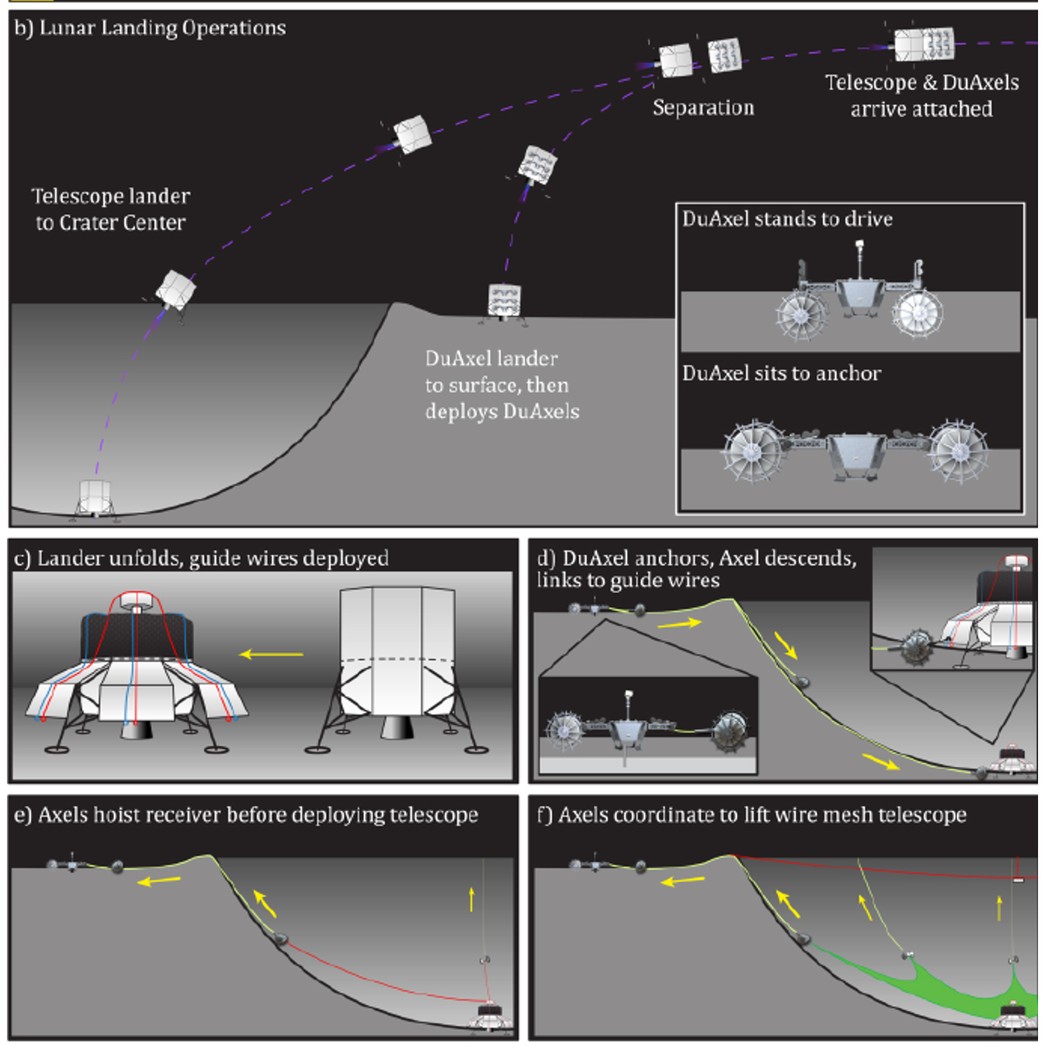| manuchandel | Date: Thursday, 16-April-2020, 1:30 PM | Message # 1 |

-- dragon lord--
Group: undead
Messages: 1557
Status: Offline
| NASA's Plan to Turn the Moon Into a Telescope Looks Like the Death Star
The far side of the Moon is a land of quiet mystery. Because it always faces away from Earth, all the noisy radio transmissions that we humans blast out never reach this part of the Moon.
Scientists have dreamed of capitalizing on this unique radio silence for decades, and NASA has now brought that vision one step closer to reality by funding a proposal to build a radio telescope inside a crater on the far side of the Moon.
The proposed observatory would be one kilometer in diameter, making it “the largest filled-aperture radio telescope in the solar system,” according to a NASA abstract about the concept.
Called the Lunar Crater Radio Telescope (LCRT), the proposal is the brainchild of Saptarshi Bandyopadhyay, a robotics technologist at NASA’s Jet Propulsion Laboratory. On Tuesday, LCRT was selected for initial “Phase 1” funding ($125,000) by NASA Innovative Advanced Concepts (NIAC) program, which aims to explore advanced, far-future technologies.
LCRT is still in “very early stages of development,” said Bandyopadhyay in an email, noting that “the objective of Phase 1 is to study the feasibility of the LCRT concept.”
“[W]e will mostly be focusing on the mechanical design of LCRT, searching for suitable craters on the Moon, and comparing the performance of LCRT against other ideas that have been proposed in the literature,” he added.
Bandyopadhyay envisions building the LCRT in a crater that measures about three to five kilometers (two to three miles) in diameter. The telescope’s wire-mesh scaffolding could be delivered and erected by wall-climbing robots, such as NASA’s DuAxel rovers, which would be capable of scaling the vertical slopes of the crater.

The LCRT would be a filled-aperture radio telescope, or spherical reflector, meaning that it uses one full dish to collect radio data, as opposed to radio arrays that are made of many networked dishes.
Currently, the largest filled-aperture telescope ever built is the Five-hundred-meter Aperture Spherical radio Telescope (FAST) in Southwest China. LCRT would be twice as big as FAST, and would have a much more conducive environment for radio astronomy.

Read more/full article/source - https://www.vice.com/en_us....th-star
|
| |
| |















